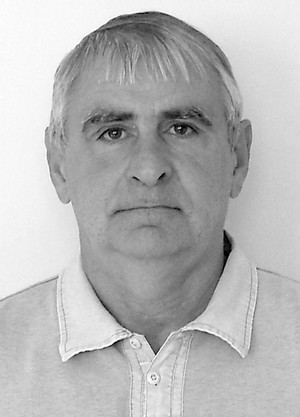Muscle strength control as fundamental element of movement control mechanism
Фотографии:
ˑ:
Teoriya i praktika fizicheskoy kultury №11 2016, pp.35-37
UDC 796.01:612
Associate Professor, PhD A.M. Trofimov
Yelets State University of Ivan Bunin, Elets
e-mail: amt59@yandex.ru
Objective of the study was to clarify the structure of the nervous-muscular mechanism of motor activity control. The article explores the problem of muscular control by the central nervous system in the free movement process. The author believes that it is the individual consciousness that controls movements, and it is the key difference of the proposed model from the control mechanisms reported by other researchers. In the author’s opinion, it is the individual will or nervous energy focused on and exciting the muscular motor centres that should be considered the core instrument of human consciousness that controls muscular system operations. The finding is largely based on the detailed comparisons of the kinaesthesia of different movements of human body and identification of the general conditions providing for every movement being accurate, dominated by the right composition of the joint angle variations. The right composition may be achieved only through the muscular contraction forces being duly controlled to move the relevant bodily segments. The article also describes the neuro-muscular mechanism that makes it possible for a human to consciously control the muscular system operations by activating the relevant muscles and controlling their contraction strength. Finally, the article gives an account of the consciousness performance sequence in a motor skill mastering process.
Keywords: motor neurons, motor centres, volitional action, notion of movement, motor program.
References
- Kots Y.M. Organizatsiya proizvol'nogo dvizheniya [Voluntary movement organization]. Moscow, 1975, 224 p.
- Pearson R.S. Spinal'nye mekhanizmy upravleniya myshechnym sokrashcheniem [Spinal control mechanisms of muscle contraction]. Moscow: Nauka publ., 1985, 183 p.
- Popov G.I., Samsonova A.V. Biomekhanika dvigatel'noy deyatel'nosti (Biomechanics of motor activity): Textbook for university students]. Moscow: Akademiya publ., 2011, 320 p.
- Trofimov A.M. Teoriya psikhicheskogo obraza i assotsiatsiy [Theory of mental images and associations]. Yelets: Bunin ESU publ., 2010, 526 p.
- Feldman, A.G. Mekhanicheskie svoystva skeletnoy myshtsy i ikh regulyatsiya nervnoy sistemoy [Mechanical properties of skeletal muscles and their regulation via nervous system]. Fiziologiya dvizheniy, Leningrad: Nauka publ., 1976, pp. 38-68.
- Feldman A.G. Tsentral'nye i reflektornye mekhanizmy upravleniya dvizheniyami [Central and reflex movement control mechanisms]. Moscow: Nauka publ., 1979, 184 p.
- Shapkov Y.T., Minkin A.A., Pik G. Upravlenie aktivnostyu dvigatel'nykh edinits kak osnova koordinatsii dvizheniya [Motor unit activity control as a basis of movement coordination].Upravlenie dvizheniyami, Moscow: Nauka publ., 1990, pp. 64-72.
- Sherrington, Ch. Integrativnaya deyatel'nost' nervnoy sistemy [Integrative activity of nervous system]. Leningrad: Nauka publ., 1969, 390 p.
Received 21.09.2015 г.




 Журнал "THEORY AND PRACTICE
Журнал "THEORY AND PRACTICE